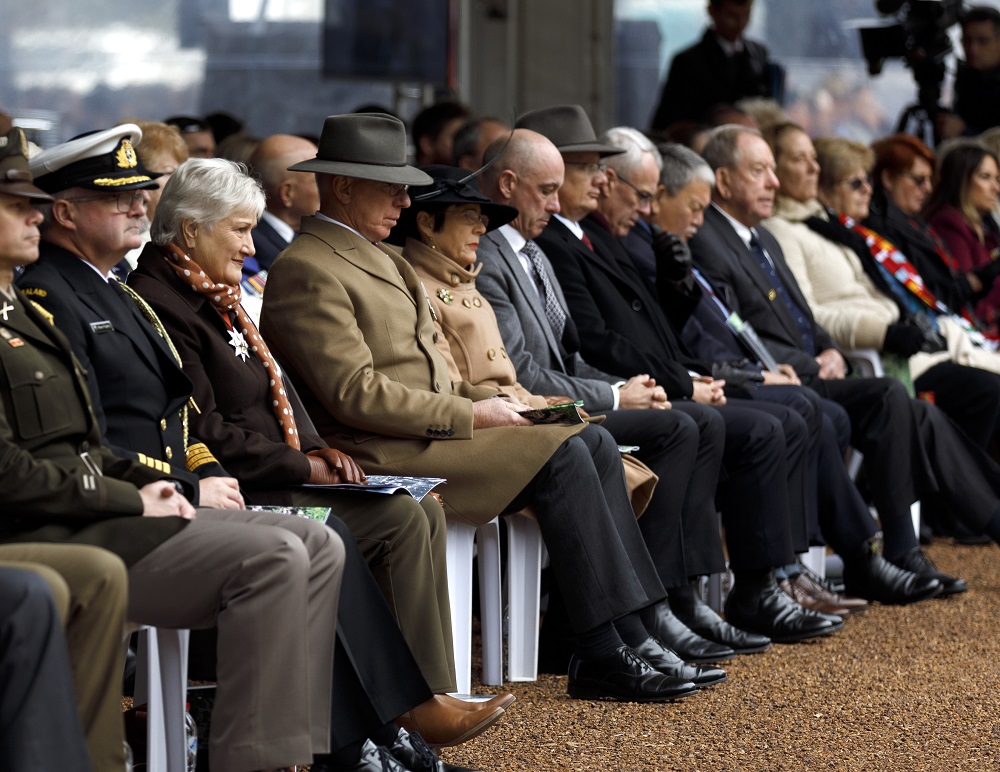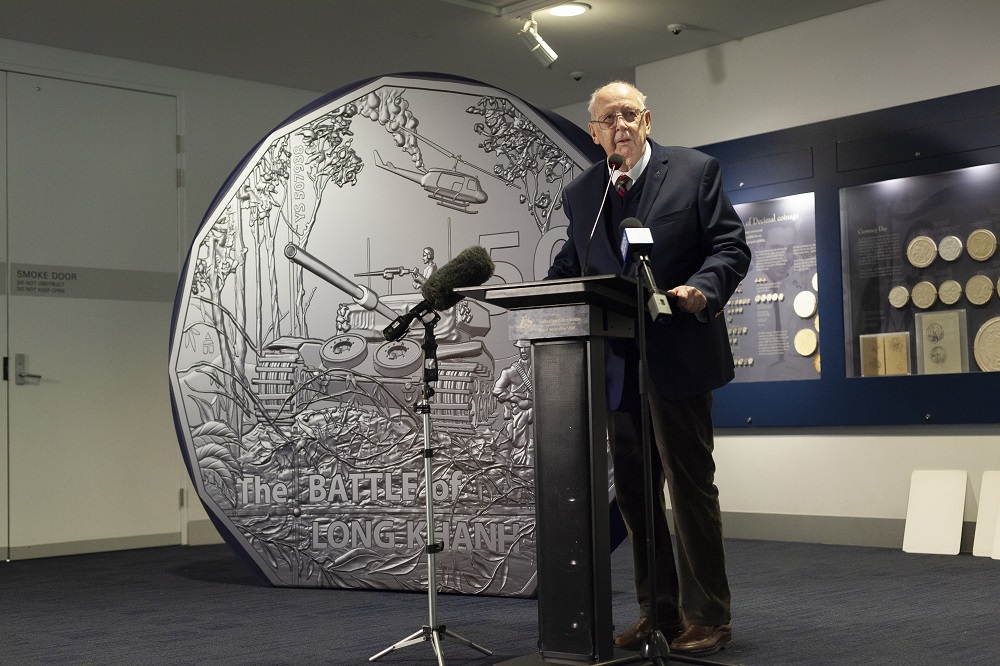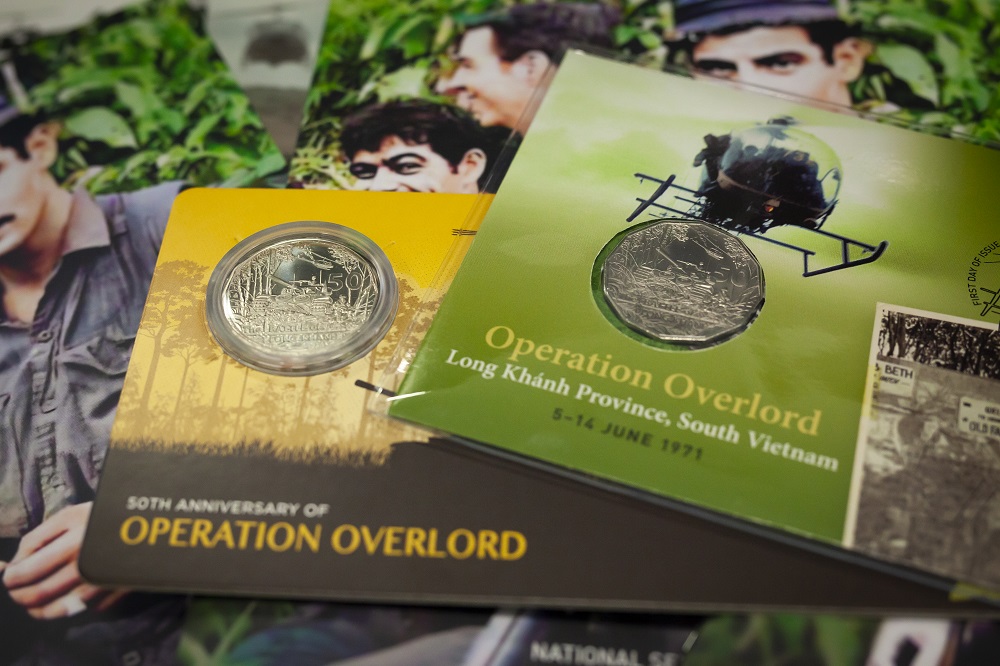Veterans honoured at Operation Overlord ceremony
On 7 June, veterans, their families and members of the wider Australian community gathered in Canberra to honour those who served on Operation Overlord, including the Battle of Long Khanh, in the Vietnam War. The battle took place 50 years ago.
The National Commemorative Service was held at the Australian Vietnam Forces National Memorial and was organised by DVA in consultation with representatives of Vietnam veterans, including many who served on Operation Overlord.
The commemorative address was delivered by the Governor-General His Excellency General the Honourable David Hurley AC DSC (Ret’d), who lauded those Australians who have served their country, and spoke of the Anzac tradition that began at Gallipoli and has been upheld by each generation since.
‘This commemoration is an important occasion to remember and honour those who died serving our nation during Operation Overlord and the Battle of Long Khanh, and to recognise all those who served during the operation and more broadly in the Vietnam War,’ said His Excellency.
‘And [it is] an opportunity for the post-Vietnam War generations to contextualise that service and consider how it informed the nation we were, and influenced the nation we became and the nation we want to be in the future.
‘We have come to ascribe four words to the Anzac legacy: endurance, sacrifice, courage and mateship. As we heard during the call to remembrance, those who served during Operation Overlord and the Battle of Long Khanh demonstrated each of these in a way that would make our forebears proud.’
Operation Overlord was initiated to prevent the North Vietnamese from gaining a foothold in Phuoc Tuy province. Named after the Second World War Allied invasion of Normandy, with whose anniversary it coincided, Overlord encompassed a large area of territory reaching north from the Courtenay rubber plantation into Long Khanh Province.
Early on 5 June 1971, Australian and New Zealand troops were deployed in the first phase of the operation and two days later, on 7 June, the Australians were engaged in some eight hours of fighting, which ended in an enemy withdrawal — this engagement became known as the Battle of Long Khanh.
Operation Overlord ended on 14 June, with the enemy driven from base areas in Phuoc Tuy. The Australian Task Force’s combat elements had been engaged for ten days.
Units involved in the battle included:
- HQ 1st Australian Task Force
- The 3rd Battalion, the Royal Australian Regiment (3RAR)
- The 4th Battalion, Royal Australian Regiment/New Zealand (4RAR/NZ)
- Armoured personnel carriers from A Squadron, 3rd Cavalry Regiment
- Centurion tanks from C Squadron, 1st Armoured Regiment
- Sappers from 1st Field Squadron, Royal Australian Engineers
- Artillery support from 12th Field Regiment
- Air support from No. 9 Squadron Royal Australian Air Force and The 161 (Independent) Reconnaissance Flight, and
- The 2/8 Battalion from the United States 1st Air Cavalry Division
- US Army Battery C, 5/42 Artillery
Memories of the battle were shared during the service by Robert Prideaux, Section Commander, 6 Platoon, Bravo Company, 3RAR. Mr Prideaux recalled a helicopter being shot down and crashing with the tragic loss of two Australian lives and the rescue of the survivors. The Ode of Remembrance was read by Eddie Tricker, D & E Platoon, Headquarters 1st Australian Task Force.
In total, 10 Australians were killed during Operation Overlord, and each was named and honoured during the commemorative service. Many next of kin and friends of those who died made the trip to attend, and laid wreaths at the memorial as part of the service.
The Commanding Officer of 3 RAR during the Battle of Long Khanh, Colonel Peter Scott DSO (Ret’d), delivered the Call to Remembrance during the service and paid tribute to his men.
‘This operation was different from previous operations conducted over the previous five years, but the result was the same,’ he said. ‘Complete domination of the enemy, matching the exploits of the Australian soldiers in World War I and II and in Korea.’
Referring to the Battle of Long Khanh he said, ‘The action on this day was the most intense for the Australians in 1971’, adding that with the entire taskforce deployed for the operation everyone contributed to its success. ‘I am immensely proud to have been the commanding officer of 3RAR, and stand here on behalf of the whole of the taskforce’, he said.
The National Commemorative Service was the centrepiece of activities commemorating Operation Overlord and the Battle of Long Khanh. Veterans from units involved in the battle gathered in Canberra to honour their mates and connect with each other.
Other activities that took place during the week included Last Post ceremonies for those who lost their lives in the operation, which took place at the Australian War Memorial, and the release of a postage-paid envelope and postal numismatic cover and coin to mark the 50th anniversary.
An official launch of the Battle of Long Khanh commemorative coin was held at the Royal Australian Mint on 8 June, and many veterans were proud to attend.
Those who were unable to attend the National Commemorative Service were able to watch it live on the ABC and through the DVA’s Facebook page. The service is currently available to watch on the ABC streaming service iView.
To download the Order of Service, visit DVA’s 50th Anniversary of Operation Overlord, including the Battle of Long Khanh webpage.
To watch a short video of the event visit the DVA Facebook page.
You can order the commemorative coin through the Royal Australian Mint website and the postage-paid envelope and a postal numismatic cover are available via Australia Post’s Operation Overland webpage.

Attendees at the National Commemorative Service, with the Governor-General His Excellency General the Honourable David Hurley AC DSC (Ret’d) and Her Excellency Mrs Hurley at centre

Commanding Officer of 3 RAR during the Battle of Long Khanh, Colonel Peter Scott DSO (Ret’d) launching the Battle of Long Khanh commemorative coin at the Royal Australian Mint

The Battle of Long Khanh commemorative coin
